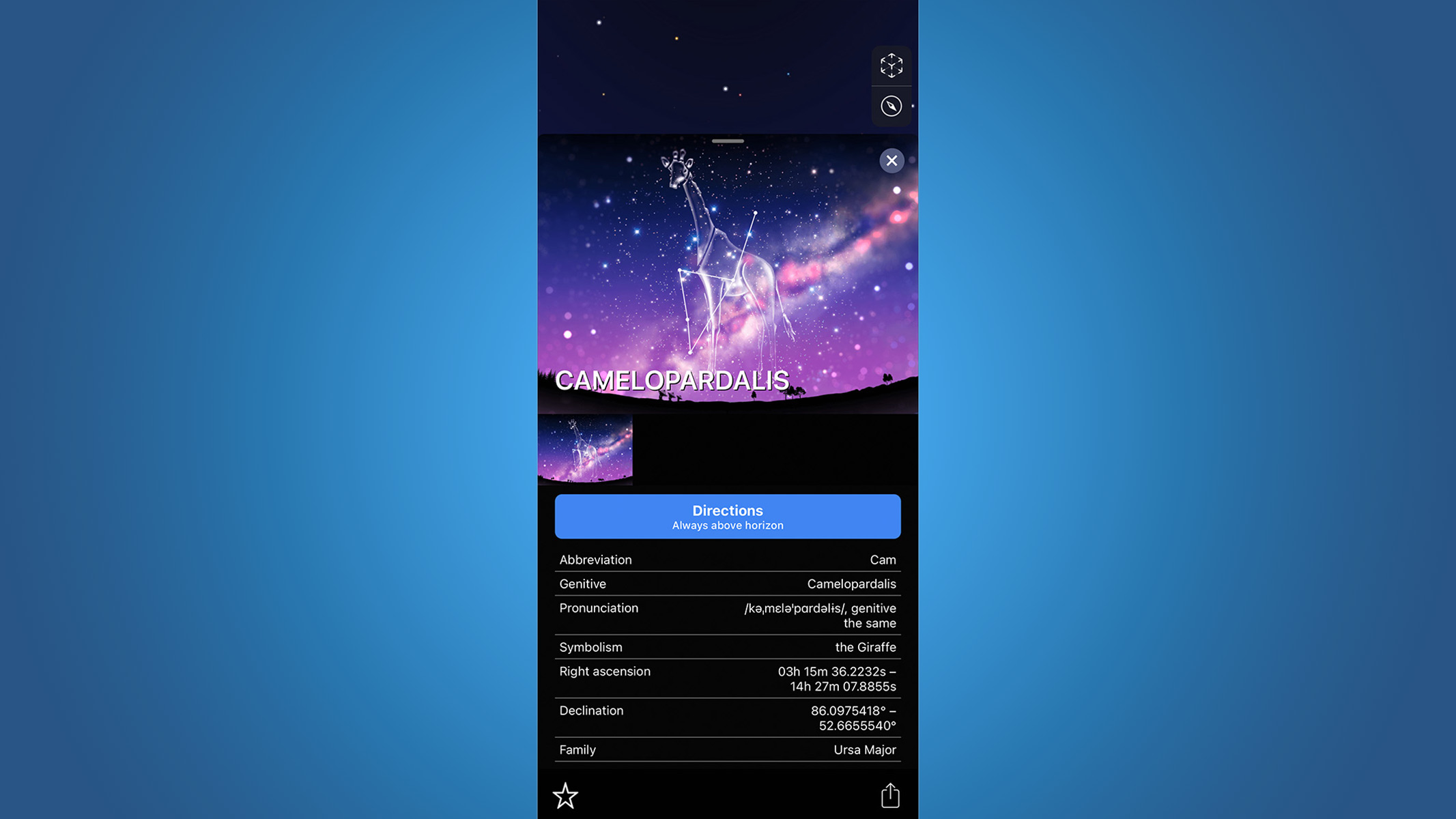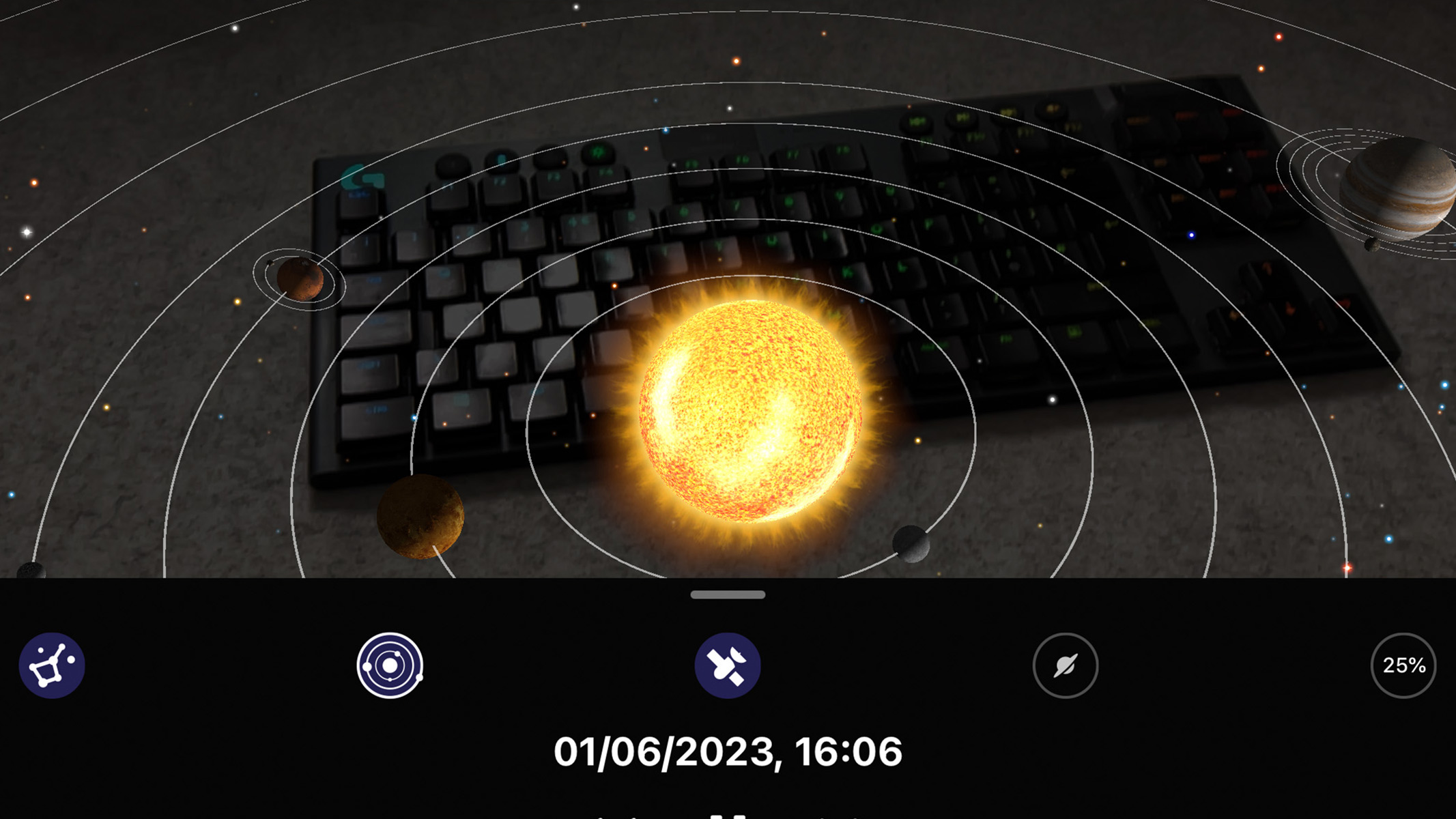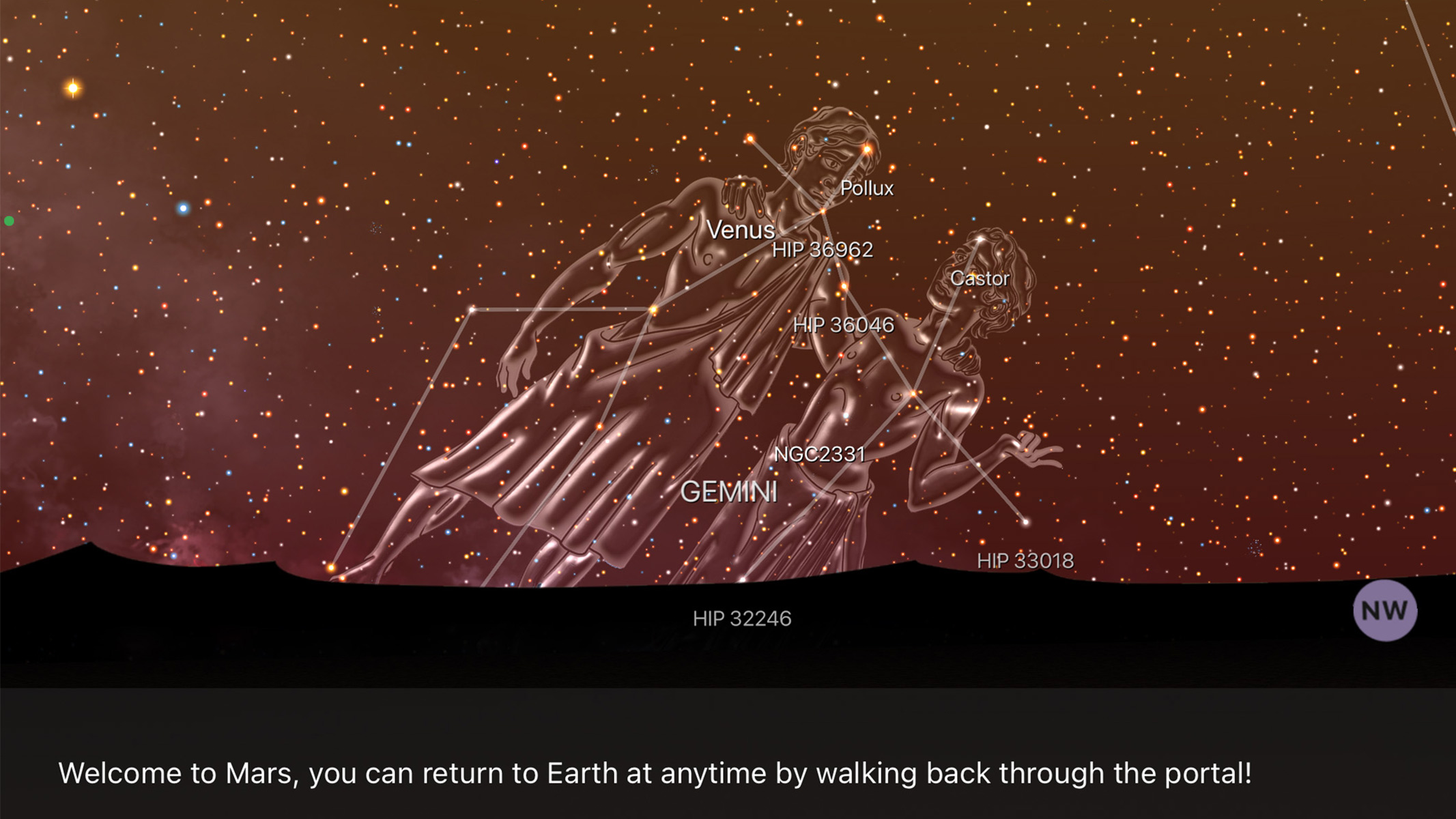
The Night Sky 11 stargazing app is one of many stargazing apps common on today's App Store, but the best stargazing apps are the ones that find an audience whether they're experienced astronomers or not.
As a relative newcomer to the field Night Sky captures the wonder of discovery and the feeling of how small we are on our blue planet but it also almost entirely removes the obfuscation of the inky sky and a lot of the busywork required.
Operating System: iOS, no Android version
Device compatibility: iPad, Mac, and Apple TV (untested)
Tested on: iPhone 13 Pro Max
Price: Free / Paid $5.99 monthly, $39.99 annually
Its main appeal is the ability to point your device to the heavens (we tested it on an iPhone) to reveal a dizzying array of constellations and galaxies laid out before you. Smart additions, like the ability to do the same indoors with an impressive Augmented Reality (AR) overlay, or set notifications for things like the best times to look for the ISS, are also welcome.
That's all included in the free version, too, but the premium version is a great way to dig a little deeper and search a little further. The service, dubbed Night Sky +, offers a bevy of extra features and removes what appears to be an arbitrary limit on the number of stars available to observe. That last feature is a shame, but develop iCandi has to make its money somehow, we suppose.
- Download Night Sky 11 app on the App Store
Night Sky 11 app review
Night Sky 11 app: Pricing and Subscription

- $5.99 per month, $39.99 per year
- Many features aren't essential, albeit impressive
- Some stars only included in Night Sky +
As mentioned above, Night Sky 11 offers a paid subscription service but is also available for free. There's a generous one-month free trial to help make your mind up, too.
While many apps see their free versions needlessly hamstrung by features being committed to the paid service, generous is the word we'd use to describe the base offering here, with one caveat.
Without spending a penny, users can open the app and look skyward for data including stars, planets, constellations, and plenty more. Even the AR mode, which projects that same data onto your ceiling, is included.

Many of the additional features are less essential but the big omission is the full 1.7 billion star count. That means users on the free version won't get the full experience, and therefore will have gaps in their knowledge if using the app exclusively for educational purposes.
Some features like Sky Tours can be found in the free version though, allowing for curated looks at the cosmos. These tours can be customized by the users and there is an extended library, but again only on the paid version.
Night Sky 11 app: User Interface

- Easy to use even for complete novices
- Some AR integration can be finicky
- 'Plus' features predominantly separate
The initial setup process for Night Sky is simple, as the app calibrates to your location and requests the relevant permissions. The ease with which it pulls the galaxy to your screen is charming.
Look up and you'll see the night sky (the real one), overlaid with a huge number of celestial bodies, including constellations with illustrations traced over the top. It's a little overwhelming to new users, but it's easy to filter down to what you're looking for with a handy menu next to the overlay. You can also switch view filters to assist with light pollution which may otherwise make it tough to discern what you're looking at.
Portrait and landscape orientations are supported, but you don't have to hold your phone up for long periods. That's because the app works in 360 degrees, so pointing downward will show you alternative constellations that would be visible on the other side of the planet. This is handy for observers that want to see what has just dipped below the horizon or will appear later in the night.
One tap on a subject will center it in the frame, and clicking the 'i' icon alongside will give a lengthy description of it. Check out the Giraffe constellation, Camelopardalis, below.

One of our favorite parts of Night Sky is how it lays out its features in a tab at the bottom of the screen. That means it's easy to see where your local planetarium is or jump into a saved Sky Tag (Night Sky's way of tracking a 'favorite' item), while premium Night Sky + features are somewhat siloed.
It's a nice way to ensure you always know what you have available and keep tabs on what you may be missing out on without convoluted app descriptions.
While much of Night Sky is built on reliable Augmented Reality (AR) functionality, some parts work a little better than others. It's likely that it'll get better over time, but it naturally suffers from objects clipping in when you ask it to do more complex things such as AR Planetary Portals.
Night Sky 11 app: Key Features

- Clear display with plenty of view options
- AR Planetary Portals are a fantastic idea
- Tours are a great way to learn
So what about those AR functions? Aside from the clear and easy-to-use interface, there's a lot to like about the way Night Sky uses your device cameras to increase immersion.
It does this in a few ways, other than the main overlay view of the sky. Another is by mapping onto your ceiling, which is admittedly more ideal in larger, squarer rooms than our sample here suggests.
We also love the AR Grand Orrery, which overlays a full solar system map onto the surface of your choosing. It can remain static, and you can interact with it, but nothing quite shows you the majesty of the stars like setting it to 1000x speed and watching planets rotate, stars move and the cosmos swirl. Though you'll need to pay for Night Sky + for that.

Perhaps the most novel use of AR in Night Sky, is what the app calls AR Planetary Portals. Again, it's a 'premium' feature, but it's one that's worth checking out with the free trial.
AR Planetary Portals opens the viewfinder and prompts users to tap and select a planet or moon within our solar system. Doing so will let you 'step through' that portal to view constellation and astronomy data from a new perspective.
It's a great idea and while it's not one that works flawlessly (the portal can open anywhere but you'll ideally want plenty of space to 'step through'), it's a great way of adding a new immersive layer.
The app can also recommend the best times to stargaze in your location and suggest when you'll see things like the ISS fly over.

Night Sky's 'Tours' offer guided views of famous constellations and celestial bodies based on specific choices or your location. You can pause them at any time with Night Sky's 'editors' offering curated options for star types, moons and anything else you can think of.
It's possible to record your own, although we did run into a strange bug where a static image was stuck over the tour interface until we closed the app and started it up again.
One of the best features is the inclusion of 'Connected Stargazing' sessions, allowing you to share the night sky with a friend or family member in real-time.
Night Sky 11 app: Astrophotography Features

- Some User Interface quirks
- Free for all users
- Integrated into iOS camera roll
Astrophotography is included for all users in Night Sky, and it lets you attach your own pictures and notes to anything you see through a Sky Tag (you only get a couple though, then you'll need to upgrade).
The Astrophotography feature set is competent enough, with focus, noise reduction, and ISO adjustment included but the interface is quite cluttered. All of the buttons line the bottom of the screen, which can make it easy to tap the wrong one.
On the positive side, you can ensure settings auto-adjust to your subject but there's also an option for manually tweaking this. It's a great way to make the feature worthwhile for both casual and more experienced users.
It's a solid option, but naturally, the performance will vary depending on the phone it's being run on. This is because it uses (and is being limited by) the camera technology of the phone. We tested on an iPhone 13 Pro Max and found it to be about as capable as using the stock camera, but without the added need for any astrophotography know-how. It's as simple to use as a simple point and shoot, but thanks to the manual controls users can get more involved with the photography process if they so wish.
Should I buy/download the Night Sky 11 app?

If you're a newcomer looking to get a better idea of our place in the galaxy, Night Sky is a great choice. It's an incredibly easy-to-use app that has a whole host of features, and while keeping some of the information behind a paywall is a little disappointing, it does at least offer plenty of added value for your money with smart AR features like the Grand Orrery and Planetary Portals. Its free version, we've found, is more generous than most so new users should take advantage of that, provided they're on an Apple device.
If Night Sky 11 app isn't for you
There are plenty of stargazing apps. If you're looking for an option that connects to your telescope, Stellarium Plus might be worth a look. When we reviewed Stellarium Plus we found it had a comprehensive database and easily connected to most telescopes to enhance their skywatching experience.
You may also want to check out SkySafari 6 Pro, which offers audio tours and pronunciation guides but these unique additional features also come at quite a cost, so it may only interest serious hobbyists and intermediate observers.
Want to take a look at the top stargazing apps? Check out our guide to the Best stargazing apps where we've tested, reviewed and rated the best quality stargazing apps around.







